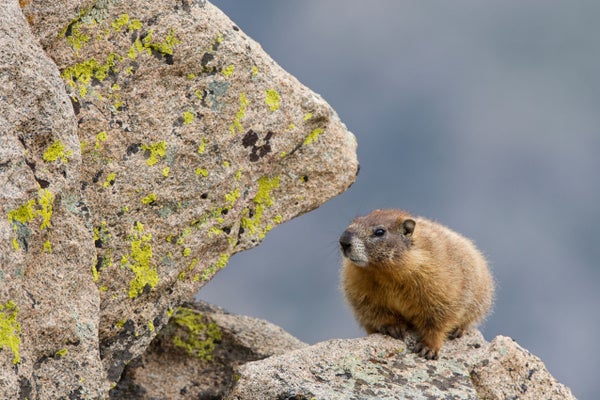The masked shrew is one of the smallest mammals in North America, just a few inches long. Yet it’s recently made a gigantic jump.
Over the last few decades, the tiny shrew has migrated more than 4,000 feet up the sides of the Rocky Mountains.
Scientists believe it’s trying to escape the heat as climate change warms the mountain range. And it’s not the only one. Dozens of other species are also scrambling higher up the slopes.
On supporting science journalism
If you're enjoying this article, consider supporting our award-winning journalism by subscribing. By purchasing a subscription you are helping to ensure the future of impactful stories about the discoveries and ideas shaping our world today.
These are the findings of a new study, which takes a sweeping look at small mammals in the Rocky Mountains of Colorado.
It’s a major wake-up call about the influence of warming on wildlife, said lead study author Christy McCain, an ecologist at the University of Colorado, Boulder.
“A lot of people care about mammals,” she told E&E News. “These are things that people like to see and take pictures of and enjoy when they go on hikes. And so it’s a nice image to think about if you care about wildlife, that this is an instance that maybe might spur people to make changes in their lives to curb climate change.”
The new study looked at 47 different small mammal species in the Colorado Rockies—from shrews to squirrels to chipmunks.
Studies in other parts of the world suggest that mountain animals are climbing higher to beat the heat. McCain and her co-authors—Sarah King of Colorado State University and Tim Szewczyk of the University of New Hampshire—wanted to find out if it was happening in the Rockies as well.
First, they needed to take a look into the past.
The researchers contacted dozens of natural history museums across North America, looking for small mammal specimens collected in Colorado over the last few decades. These specimens helped them compile a comprehensive database on where these mammals were typically found—and how high up—from the 1980s onward.
Next, the researchers conducted a series of on-the-ground surveys in the Colorado Rockies, counting small mammals and noting the places each species is found today. Then, they calculated how much each mammal population has moved—if at all—over the last few decades.
They found that 26 of the 47 studied species had shifted upward over time.
The masked shrew had one of the biggest jumps, climbing a total of around 4,500 feet. The difference varied among the other species—anywhere from a few hundred to a few thousand feet, with the average falling around 430 feet.
The species with the biggest upward leaps tend to have some important traits in common, McCain noted. Most of them are animals specially adapted for cold weather. For many of them, Colorado is about as far south as they’re ever found.
It’s not surprising that these animals are the hardest hit by rising temperatures, especially at the southernmost edge of their range, McCain said.
“It’s another one of those scenarios of a canary in a coal mine,” she said. “Things we expect to shift—cold-adapted species—are shifting.”
Not every species is climbing higher. The study found that 11 of the 47 mammals actually shifted downward. Most of these were species typically found at lower elevations anyway, McCain noted—the types that might be less sensitive to mountain warming, at least for now.
Six species didn’t appear to shift at all.
And four species disappeared from the mountains entirely between the 1980s and the present day. The researchers suspect that human development and habitat loss was a major player in these cases, alongside the pressures of climate change.
The study provides a snapshot of just one region in the United States. Still, its findings support the conclusions of other studies around the world—that mountain ecosystems are sensitive to climate change, and wildlife in these places are already responding to the pressure.
“This is the first indication that large clades of animals are responding to climate change [in the Colorado Rockies],” McCain said. “And so I think it’s just saying the Rockies—even though they’re so huge and encompass such a large area—there are still species that are responding to climate change in these mountains.”
Reprinted from E&E News with permission from POLITICO, LLC. Copyright 2021. E&E News provides essential news for energy and environment professionals.
